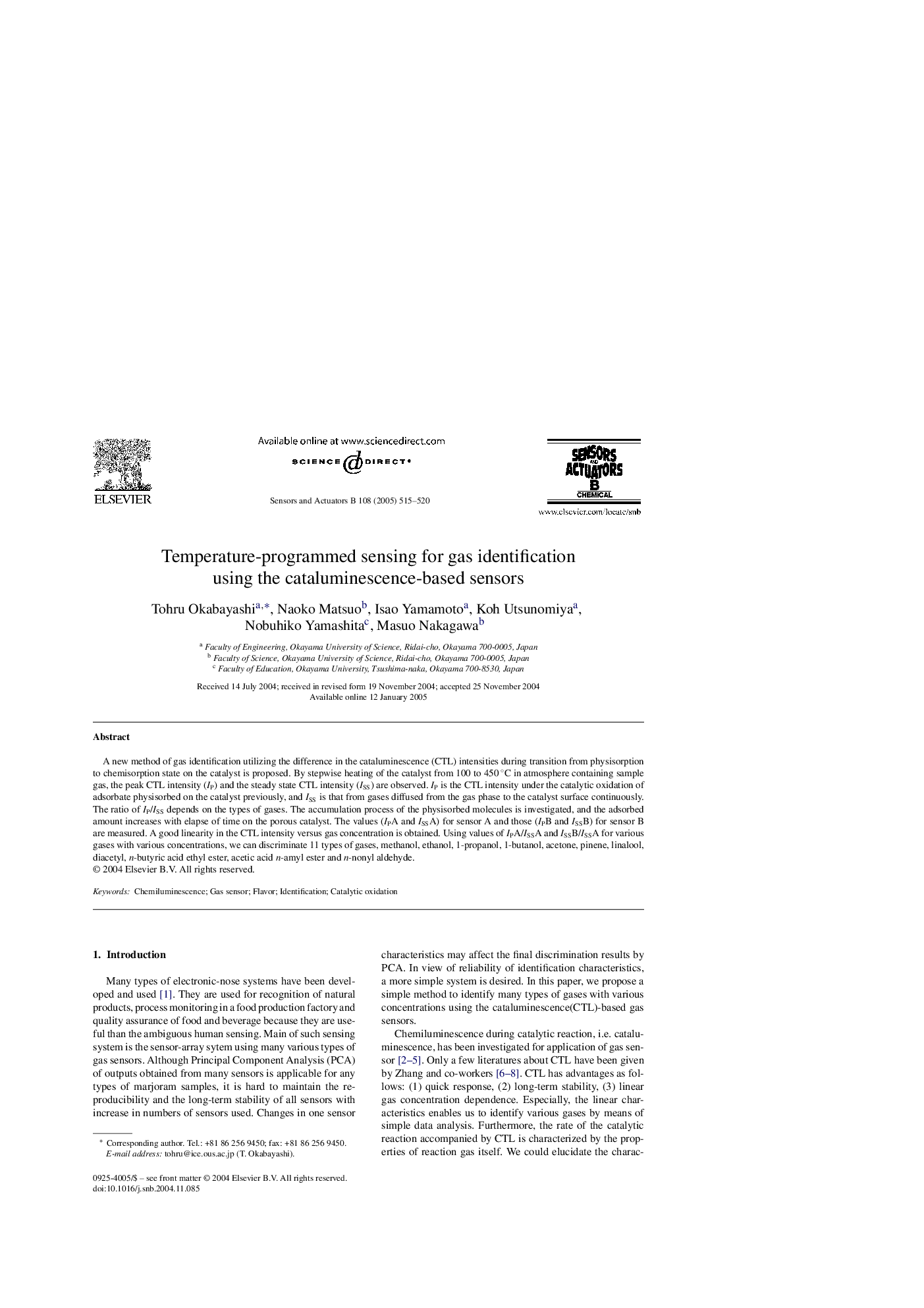| Article ID | Journal | Published Year | Pages | File Type |
|---|---|---|---|---|
| 9700981 | Sensors and Actuators B: Chemical | 2005 | 6 Pages |
Abstract
A new method of gas identification utilizing the difference in the cataluminescence (CTL) intensities during transition from physisorption to chemisorption state on the catalyst is proposed. By stepwise heating of the catalyst from 100 to 450 °C in atmosphere containing sample gas, the peak CTL intensity (IP) and the steady state CTL intensity (ISS) are observed. IP is the CTL intensity under the catalytic oxidation of adsorbate physisorbed on the catalyst previously, and ISS is that from gases diffused from the gas phase to the catalyst surface continuously. The ratio of IP/ISS depends on the types of gases. The accumulation process of the physisorbed molecules is investigated, and the adsorbed amount increases with elapse of time on the porous catalyst. The values (IPA and ISSA) for sensor A and those (IPB and ISSB) for sensor B are measured. A good linearity in the CTL intensity versus gas concentration is obtained. Using values of IPA/ISSA and ISSB/ISSA for various gases with various concentrations, we can discriminate 11 types of gases, methanol, ethanol, 1-propanol, 1-butanol, acetone, pinene, linalool, diacetyl, n-butyric acid ethyl ester, acetic acid n-amyl ester and n-nonyl aldehyde.
Related Topics
Physical Sciences and Engineering
Chemistry
Analytical Chemistry
Authors
Tohru Okabayashi, Naoko Matsuo, Isao Yamamoto, Koh Utsunomiya, Nobuhiko Yamashita, Masuo Nakagawa,
